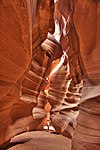Fáìlì:Piles of Salt Salar de Uyuni Bolivia Luca Galuzzi 2006 a.jpg

Ìtóbi ìkọ́yẹ̀wò yìí: 800 × 528 pixels. Àwọn ìgbéhàn míràn: 320 × 211 pixels | 640 × 422 pixels | 1,024 × 676 pixels | 1,280 × 845 pixels | 2,000 × 1,320 pixels.
Fáìlì àtìbẹ̀rẹ̀ (2,000 × 1,320 pixel, ìtóbi faili: 892 KB, irú MIME: image/jpeg)
Ìtàn fáìlì
Ẹ kan kliki lórí ọjọ́ọdún/àkókò kan láti wo fáìlì ọ̀ún bó ṣe hàn ní àkókò na.
| Ọjọ́ọdún/Àkókò | Àwòrán kékeré | Àwọn ìwọ̀n | Oníṣe | Àríwí | |
|---|---|---|---|---|---|
| lọ́wọ́ | 07:30, 22 Oṣù Kẹta 2007 |  | 2,000 × 1,320 (892 KB) | Trialsanderrors | {{Information |Description={{en|Piles of Salt on the Salar de Uyuni, Bolivia.}} {{it|Raccolta del sale nel Salar de Uyuni, Bolivia.}} |Source=Photo taken by (Luca Galuzzi) * http://www.galuzzi.it |Date=2006-04-14 |Aut |
Ìlò fáìlì
Àwọn ojúewé 2 wọ̀nyí únlo fáìlì yí:
Ìlò fáìlì káàkiri
Àwọn wiki míràn wọ̀nyí lo fáìlì yìí:
- Ìlò ní af.wikipedia.org
- Ìlò ní ar.wikipedia.org
- سالار دو أويوني
- ملح الطعام
- ويكيبيديا:صور مختارة/أماكن/مناظر طبيعية
- تاريخ الملح
- ويكيبيديا:ترشيحات الصور المختارة/بحيرة ملحية
- ويكيبيديا:صورة اليوم المختارة/أبريل 2016
- قالب:صورة اليوم المختارة/2016-04-14
- بوابة:مطاعم وطعام/مقالة مختارة
- بوابة:مطاعم وطعام/مقالة مختارة/أرشيف
- بوابة:مطاعم وطعام/مقالة وصورة
- بوابة:مطاعم وطعام/مقالة مختارة/2
- ويكيبيديا:صورة اليوم المختارة/يونيو 2017
- قالب:صورة اليوم المختارة/2017-06-25
- ويكيبيديا:صورة اليوم المختارة/يونيو 2019
- قالب:صورة اليوم المختارة/2019-06-05
- هندسة العمارة البوليفية
- ويكيبيديا:صورة اليوم المختارة/يناير 2022
- قالب:صورة اليوم المختارة/2022-01-12
- بحيرة جافة
- طعام الإنسان
- Ìlò ní ast.wikipedia.org
- Ìlò ní av.wikipedia.org
- Ìlò ní ay.wikipedia.org
- Ìlò ní ba.wikipedia.org
- Ìlò ní be.wikipedia.org
- Ìlò ní bn.wikipedia.org
- Ìlò ní br.wikipedia.org
- Ìlò ní ca.wikipedia.org
- Ìlò ní ceb.wikipedia.org
- Ìlò ní crh.wikipedia.org
- Ìlò ní cs.wikipedia.org
Ìfihàn ìlò míràn púpọ̀ fún fálì yìí.





